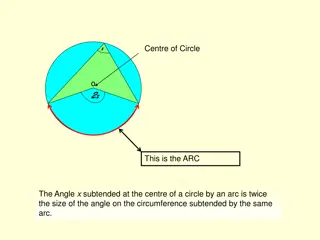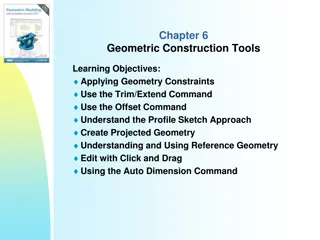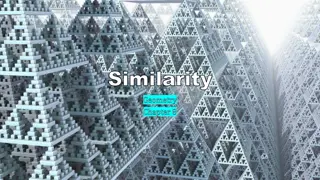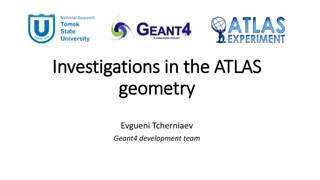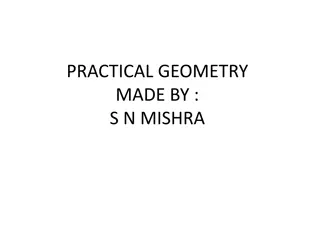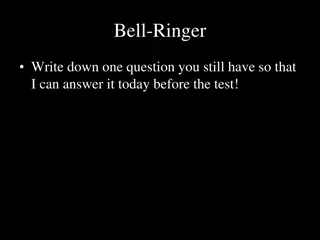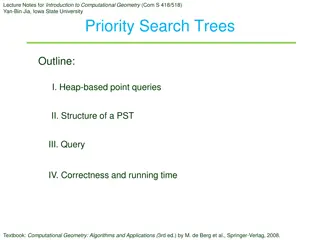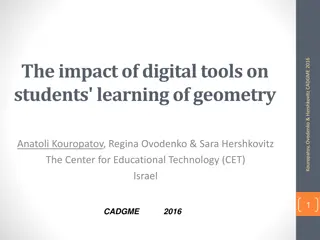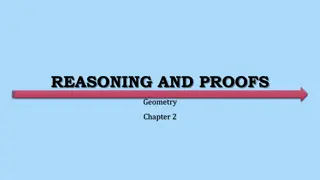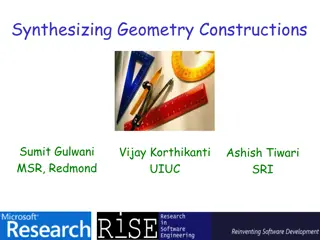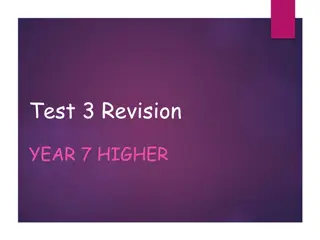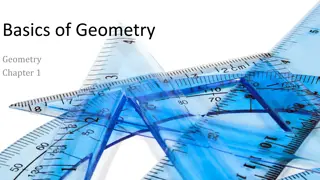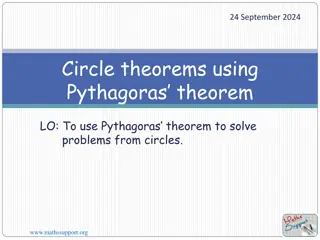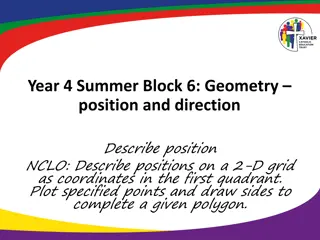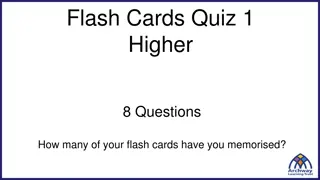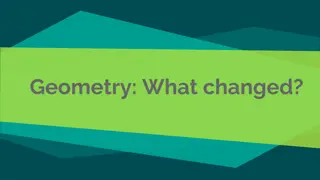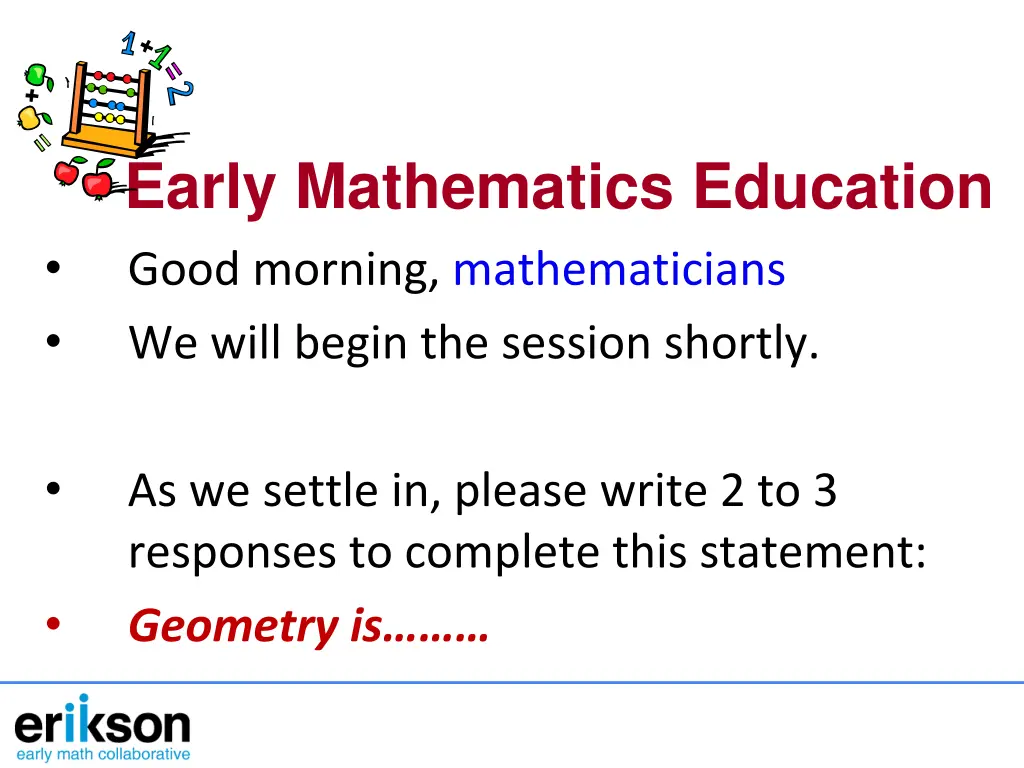
Exploring the Fascinating World of Geometry
Dive into the captivating realm of geometry through engaging activities like drawing paths, creating maps, and understanding spatial relationships. Discover the essence of geometry and its relevance in everyday scenarios.
Download Presentation

Please find below an Image/Link to download the presentation.
The content on the website is provided AS IS for your information and personal use only. It may not be sold, licensed, or shared on other websites without obtaining consent from the author. If you encounter any issues during the download, it is possible that the publisher has removed the file from their server.
You are allowed to download the files provided on this website for personal or commercial use, subject to the condition that they are used lawfully. All files are the property of their respective owners.
The content on the website is provided AS IS for your information and personal use only. It may not be sold, licensed, or shared on other websites without obtaining consent from the author.
E N D
Presentation Transcript
Early Mathematics Education Good morning, mathematicians We will begin the session shortly. As we settle in, please write 2 to 3 responses to complete this statement: Geometry is
Reflective Practice Turn and Talk about what happened when you did the shoe graph research lesson. What did you notice that children said and did to show evidence of understanding or confusion?
Lets Do Math Adult Learning Experience Obstacle Course Can you guess what math content we are focusing on today?
Learning Labs 2013-2014 Session 5 6 7 8 Topic Operations Measurement Data Geometry
Lets Talk about Math What s the connection between the obstacle course, drawing Rosie s path and spatial relationships? In what way are spatial relationships mathematical?
Draw a Google map for Rosie s walk Work on your own, using the grid paper. Rosie must follow a closed path that can be Circular Rectangular Triangular
GPS for Rosies Walk Find a partner from another table; do not show each other your maps during this activity, until the very end. Partner A gives B verbal directions as B tries to draw A s map on another grid paper. Then B gives A directions. You may only use movement and direction terms.
Lets Talk About the Math How well did the map you drew from the directions reflect the one your partner drew and described? What did you or your partner do that might have made the task easier or more challenging? Where is the math in the Rosie s Walk activities?
Lets Talk About Geometry Looking back at the Geometry is . statements, how has your understanding changed? How might these terms make sense? Path shape perimeter Defining mathematical attributes of shapes?
Developmental Considerations 1) Movement in space is a basic and powerful experience that helps develop spatial sense. Children need to talk about, plan, organize such movements
Developmental Considerations 2) Perspective-taking is just developing in many children of this age Provide many experiences to show Things look different depending upon where the viewer is. Words describe directions relative to a particular point of view Positional words often come in opposites: over/under; up/down; left/right; near/far
Developmental Considerations 3) English language learners and children whose language is developing will need more support in understanding & using directional language, including Use of child s home language as much as possible Use of gestures
Spatial Relationships: Big Ideas and Key Skills Naming: Accurate response to and use of positional words (e.g., over, under, around, right, left, etc) Expressing measurement in appropriate units (e.g., Go 3 steps forward; Your house is 2 blocks away from mine.) Recognizing and expressing difference in spatial relationships depending on relative position (e.g., the car is to your left and my right; When I look at the tree from far away it looks smaller than when I am close to it) Fluency in visualizing and manipulating spatial relationships (e.g., being able to mentally flip pieces to make them fit in a jigsaw puzzle). manipulated mentally. Relationships between objects and places can be described with mathematical precision. Our own experiences of space and two- dimensional representations of space reflect a specific point of view Spatial relationship can be visualized and
Research Lesson: Rosies Walk WALK WITH ROSIE_PEARSON.wmv 1. How does the sequence of the activities support children to represent their understanding of spatial relationships in more than one way? 2. How does the teacher give ownership of the lesson to the children? 3. List the ways the teacher supports children s language development? 4. What evidence do you see that children are engaged and are actively constructing their own understanding?
Lets Get in Shape Each of us will have a regular shape pinned on our back. We go around asking yes and no questions about the mathematical attributes of the shape to others, trying to figure out what shape we have. Mathematical Attributes include Type of line (curved or straight) Number of lines Number and type of corners Relationship between length or angles (all the same, 2 are equal, other(s) are not etc .
Shapes Big Ideas Key Skills Shapes can be defined and classified by their attributes. Naming: knows mathematical attributes include straight and/or curved lines, number of sides and angles (corners), and type of angles (square corner or not ) The flat faces of solid shapes(three dimensional shapes) are two dimensional shapes. Noticing and Expressing measurement/comparison of shapes, including that sides of a shape may have different length or that 2 triangles can be same type but that one can have longer sides. Shapes can be combined and separated (composed and decomposed) to make new shapes.
Research Lesson: Feeling for Shapes feel_for_shapes.m4v 1. How does the mystery bag activity focus children s attention on the defining attributes of shapes, rather than on shape names? 2. How does the teacher give ownership & support the children s learning? 3. List the ways the teacher supports children s language development? 4. What evidence do you see that children are engaged and are actively constructing their own understanding?
Reflecting on Big Ideas of Early Mathematics

